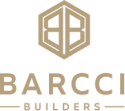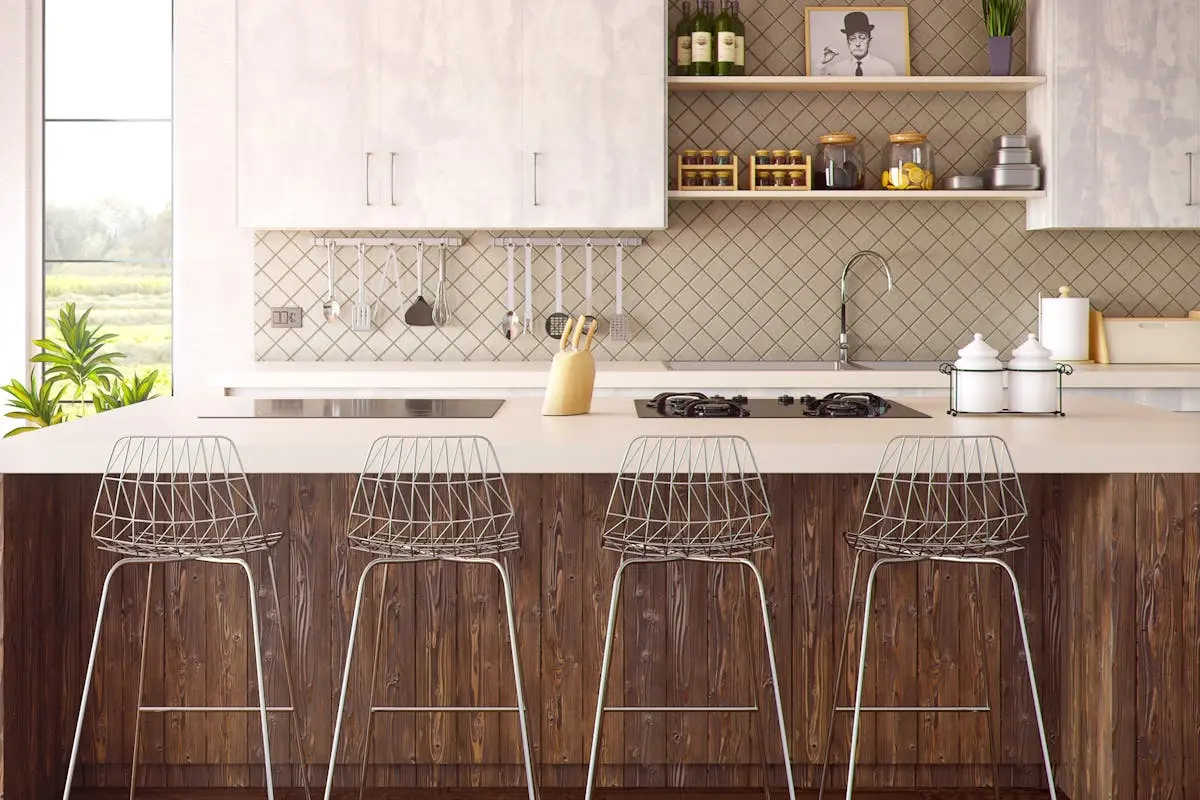Introduction to Kitchen Remodel: Starting Your Journey
Starting a kitchen remodel can feel overwhelming, but it’s an exciting chance to breathe new life into your home. Think of it as a journey to creating a space that’s uniquely yours. Before you dive in, it’s crucial to know a few fundamentals. First, understand why you’re remodeling. Is it to improve functionality, increase your home’s value, or just because your kitchen’s style is outdated? Knowing your “why” will guide your decisions down the road. Next, set a realistic budget. Consider not just the look, but also the practical aspects like plumbing and electrical work, which can add up quickly. Lastly, create a timeline. Rushing a remodel can lead to shortcuts and mistakes, so allot enough time to do it right. Keep these pointers in mind, and you’ll be well on your way to a kitchen that’s not just new, but tailored perfectly to your needs.
Determining Your Kitchen Remodel Budget
Figuring out your kitchen remodel budget isn’t just about how much you want to spend but about understanding what you can realistically afford. Start by looking at your finances. How much can you comfortably pull out without putting yourself in a tight spot? Then consider the value of your home. A common rule is not to spend more than 15% of your home’s total value on a kitchen remodel. Why? Because you want to ensure you’re investing smartly. Once you’ve got a rough number, it’s time to break it down.
Materials take up a big chunk, usually half of the total cost. Then there’s labor, which can be 20% to 35% of your budget. Don’t forget about the sneaky extras. Permits, eating out while the kitchen’s a warzone, and unexpected issues can bloat your budget. And here’s a pro tip – always set aside at least 20% of your budget for surprises. You’ll thank yourself later.
Your goal? A shiny new kitchen that doesn’t drain your bank account. By starting with a clear budget, you’re stepping onto the path of remodeling success. Keep it simple, be realistic and prepare for the unexpected. That’s how you win the kitchen remodel game.
Key Considerations Before You Begin
Before you dive into remodeling your kitchen, think hard about what you need versus what you want. Start with your budget. How much can you really spend? Stick to this number. Next, assess your kitchen layout. Sometimes, the structure you have is already good, you just need to update it. Focus on what needs a change – be it cabinets, countertops, or appliances. Do you cook a lot? Prioritize a functional layout and high-quality appliances. Less of a chef? Maybe aesthetic updates like paint and lighting are your go-to. Remember, every choice should add value to your home and make your kitchen life easier. Lastly, factor in the timeline. Kitchen remodels can take a while, so plan for life without a kitchen for a bit. Keep it simple, straightforward, and always on budget.
Design Ideas and Trends for Your Kitchen Remodel
When thinking about remodeling your kitchen, keeping up with the latest design trends can give your space a modern and stylish look. Currently, minimalist designs are in, focusing on clean lines and functional spaces. Think about incorporating open shelving or handleless cabinets for a sleek look. Also, using a monochrome color palette or adding pops of color with a statement backsplash can instantly uplift the vibe of your kitchen.
Another trend is integrating smart technology. From smart fridges that help you keep track of groceries to faucets that activate with motion sensors, technology can make your kitchen not only look modern but also make life easier. Don’t forget about sustainability. More homeowners are choosing eco-friendly materials, like bamboo for flooring and recycled glass for countertops. Not only does this help the environment, but it also adds a unique touch to your kitchen.
Finally, consider the layout carefully. The classic ‘work triangle’ design, which positions the sink, refrigerator, and stove at triangular points for efficiency, is always a smart choice. However, open-plan layouts are gaining popularity, as they allow for more social interaction and a spacious feel.
Remember, the key is to blend functionality with personal style to create a kitchen that you’ll love for years to come.
Choosing the Right Appliances for Your New Kitchen
When remodeling your kitchen, picking the right appliances is not just about color or style. You’re looking for reliability, efficiency, and a good fit for your cooking needs. Start by considering what you disliked about your old appliances. Was the oven too slow? Fridge too small? Use these insights as a foundation. Next, think about energy efficiency. Look for appliances with the ENERGY STAR label to save on utility bills. Now, size matters. Measure your space to ensure your dream fridge can actually fit. Don’t forget about the cooktop and oven. If you love baking, consider a convection oven. It cooks faster and more evenly. For the cooktop, gas and induction have their fans, but your choice depends on your cooking style. Lastly, think long-term. Stainless steel remains popular for durability and ease of cleaning. And though it might tempt, skipping the smart appliance trend could save you money. Choose wisely and your kitchen won’t just look good, it’ll work beautifully for you.
Cabinets and Countertops: Options and Ideas
When you dive into a kitchen remodel, cabinets and countertops are where you’ll likely spend a big chunk of your budget. It’s not just about picking what looks good—think about durability, maintenance, and of course, style. Laminate countertops are your friend if you’re looking to save some cash. They come in various colors and styles, so don’t think cheap means boring. Granite and quartz, on the other hand, are the go-tos for a reason. They’re tough, they last, but yeah, they can be a hit to your wallet. If you’re dreaming of that farmhouse kitchen look, butcher block counters might be your jam. They add warmth and are surprisingly affordable, but remember, they need a bit more love and care to stay looking good. Now, cabinets. If you’ve got the dough, custom cabinets offer a perfect fit and endless design options. Too rich for your blood? Stock cabinets can be just as stylish and won’t break the bank. They come in standard sizes but hey, sometimes standard works just fine. Don’t forget, paint or new hardware can work wonders on old cabinets if you’re not looking to replace them. So, mix and match, find what works for your space, your style, and your budget. This part of your kitchen remodel is a big deal, but with a bit of know-how, you’ll nail it.
Flooring Options for Your Kitchen Remodel
When remodeling your kitchen, picking the right flooring is crucial because it ties the room together and enhances practicality. There are several options, each with its benefits. Hardwood floors bring warmth and a timeless look but require regular maintenance to avoid damage from spills or drops. Tiles, either ceramic or porcelain, offer durability and water resistance, making them ideal for a kitchen environment. They come in various colors and designs but can be cold underfoot. Laminate flooring provides a cost-effective alternative with a resemblance to hardwood or tiles, offering ease of installation and low maintenance but less durability. Vinyl is another practical choice, known for its resilience, water resistance, and comfort underfoot, available in sheets, tiles, or planks. Finally, natural stone tiles, such as granite or marble, add luxury and durability but can be expensive and require sealing to prevent stains. Consider your kitchen’s needs, your budget, and the overall look you want to achieve when choosing the best flooring option.
Lighting Ideas to Brighten Your Kitchen
Good lighting changes everything, especially in the kitchen. It’s not just about making the space look good—proper lighting improves functionality and sets the right mood. Think about layers of light: ambient, task, and accent. Ambient light is your kitchen’s main light source, maybe from a ceiling fixture, spreading evenly throughout the space. Task lighting focuses on work areas. Think under-cabinet lights brightening your countertops. Lastly, pendant lights or track lighting can add accent and character, highlighting the island or dining area. Don’t forget, LED bulbs save energy and money in the long run, plus they offer a range of colors and brightness. Simple updates like swapping out old fixtures can make a big difference. So, light up your kitchen wisely; it’s a game-changer.
Hiring Professionals vs. DIY: Pros and Cons
When planning a kitchen remodel, you’ll face the big decision of whether to hire professionals or to dive into the project DIY-style. Let’s break it down. Going the professional route means bringing in experienced contractors who know exactly how to handle plumbing, electrical, and structural changes. They get the job done fast and efficiently, ensuring everything meets current building codes. Plus, they can foresee and tackle problems you might not think of. On the downside, professional work comes with a heftier price tag and sometimes longer timelines due to their busy schedules.
Opting for DIY, on the other hand, can significantly cut costs. You have complete control over the timeline and every detail of the project. It’s also a chance to learn new skills and take pride in the work you’ve done. However, DIY isn’t without its flaws. Mistakes can be costly and time-consuming to fix. And, if you’re not up to speed on codes and regulations, it might result in work that isn’t up to standard.
To make a sound decision, weigh the complexity of your remodel, your own skills, and your budget. Remember, mixing both approaches might be the best path for you. Hiring pros for the big tasks while handling smaller projects can save money and ensure the critical aspects are done right.
Final Checklist Before Starting Your Kitchen Remodel
Before you dive into your kitchen remodel, take a step back and go through this final checklist. It’s your last chance to ensure everything’s in order, so let’s make sure you’ve got all bases covered. First, double-check your budget. Remodeling can uncover surprises, so have a little extra set aside. Next, confirm the timeline with your contractors. You don’t want to be left guessing when things will be done. Have you secured all necessary permits? Don’t skip this step; it can save you from headaches later. Review your design one last time. It’s easier to make changes now than during the construction. Make sure you’ve ordered all materials and appliances. Delays in delivery can slow down your project. Lastly, set up a temporary kitchen. You’ll need somewhere to make your coffee while your main kitchen is a work in progress. Go through these points, and you’ll be set for a smoother remodeling journey.






